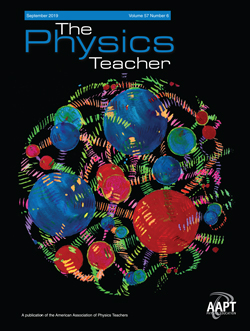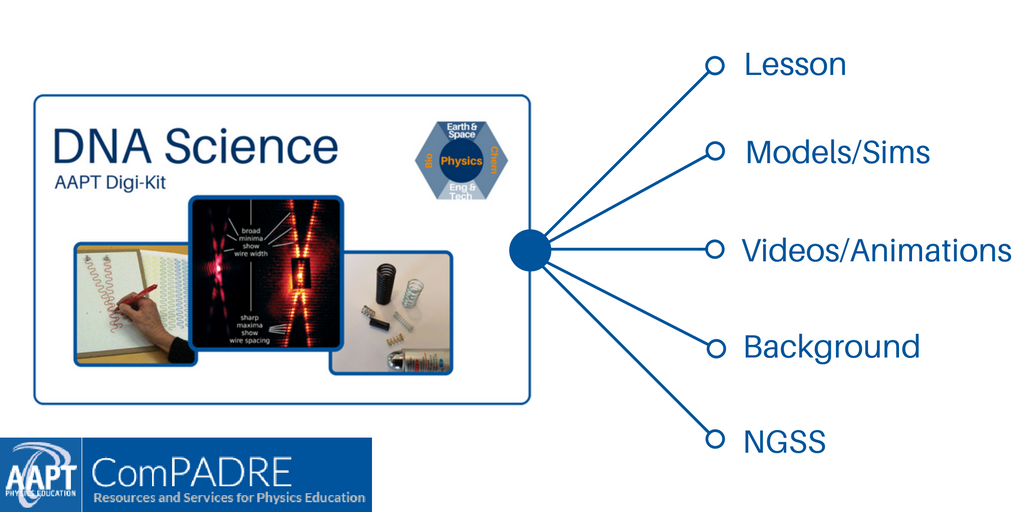The Physics Teacher
Volume 57 Issue 6, September 2019
This month's cover image by Diane Lincoln vividly depicts the complex structure of the proton. Here, the blue spheres represent up quarks and antiquarks while the red spheres represent down, in contrast to Fig. 5 on page 371, wherein colors are used to represent the strong force “charges” instead. See “A Centennial of Protons” for more on this particle’s fascinating story.
Letters to the Editor
Teaching yourself physics by Thomas B. Greenslade Jr. DOI: 10.1119/1.5124264
Dropping in: Superheroes vs. mortals by Hector G. Riveros. DOI: 10.1119/1.5124265
Computational skydiving by Philip Blanco. DOI: 10.1119/1.5124266
Combo of Figuring Physics by Terry Toepker. DOI: 10.1119/1.5124267
Columns
And the Survey Says..., Astronotes, Figuring Physics, iPhysicsLabs, Physics Challenge for Teachers and Students, Fermi Questions, Talkin' Physics, Technology in the Classroom
Papers
Restricted Brachistochrone by Leonid Minkin, and Percy Whiting. DOI: 10.1119/1.5124269
Thank You to Our Referees!: March 16, 2018 – June 30, 2019. DOI: 10.1119/1.5124270
Physics and Birdsong: “Listening” with Graphs by James de Winter. DOI: 10.1119/1.5124271
A Centennial of Protons by Don Lincoln. DOI: 10.1119/1.5124272
Momentum as a Maintaining Agency: A Different Approach to Teaching Force by Jarier Wannous, and Peter Horváth. DOI: 10.1119/1.5124273
An Alternate View of the Elliptic Property of a Family of Projectile Paths by Radhakrishnamurty Padyala. DOI: 10.1119/1.5124275
Effects of Exoplanetary Gravity on Human Locomotion Ability by Nikola Poljak, Dora Klindzic, and Mateo Kruljac. DOI: 10.1119/1.5124276
Adapting RealTime Physics for Distance Learning with the IOLab by Erik Bodegom, Erik Jensen, and David Sokoloff. DOI: /10.1119/1.5124277
Utilization of a Simple Educational Tool in Science Education: The V-Shape Spring by Sumiaki Nakano. DOI: /10.1119/1.5124278
Miniature Tesla Coil Teaching Lab by Nathan Tompkins. DOI: 10.1119/1.5124279
Estimating RC Time Constants Using Sound by Jeffrey R. Groff. DOI: 10.1119/1.5124280
PICUP: A Community of Teachers Integrating Computation into Undergraduate Physics Courses by Marcos D. Caballero, Norman Chonacky, Larry Engelhardt, Robert C. Hilborn, Marie Lopez del Puerto, and Kelly R. Roos. DOI: 10.1119/1.5124281
A Simple Model of Initial Tension in Springs by William H. Bassichis. DOI: 10.1119/1.5124282
A Measurement of the Gravitational Acceleration with Many Different Pendula by Samuele Straulino. DOI: 10.1119/1.5124283
Five Tips for Integrating Khan Academy in Your Course by James Gray, and Christine Lindstrøm. DOI: 10.1119/1.5124284
The Build-it, Leave-it, Teach-it Program: A Model for Recruiting and Retaining Pre-service Physics Teachers by Kurt Fletcher, James McLean, Robert Sells, Katie Rommel-Esham, and Dennis Showers. DOI: 10.1119/1.5124285
Robert A. Millikan and the Undergraduate Physics Laboratory by Thomas B. Greenslade Jr. DOI: 10.1119/1.5124286
Using a Simple Method to Estimate (Approximate) the Angle Between the Lunar Orbit and the Ecliptic by R. Suat Isildak, H. Asuman Kucukozer, Huseyin Kucukozer, and Kemal Yurumezoglu. DOI: 10.1119/1.5124287
Additional Resources
Race and Physics Teaching Collection Resource
DNA Science Lesson & Digi-Kit
Inspired by an article from The Physics Teacher, this multidisciplinary lesson and digital resource collection is based on How Rosalind Franklin Discovered the Helical Structure of DNA: Experiments in Diffraction (Braun, Tierney, & Schmitzer, 2011). Click the image to access this resource.



